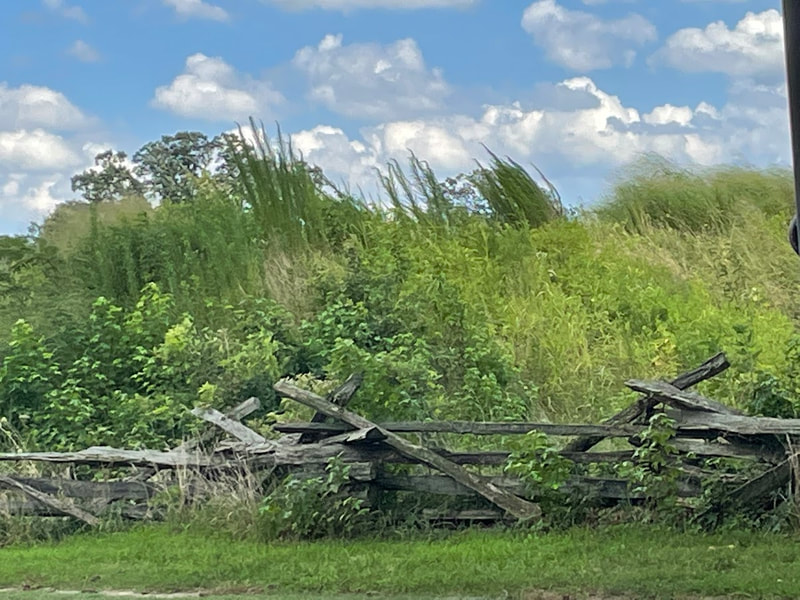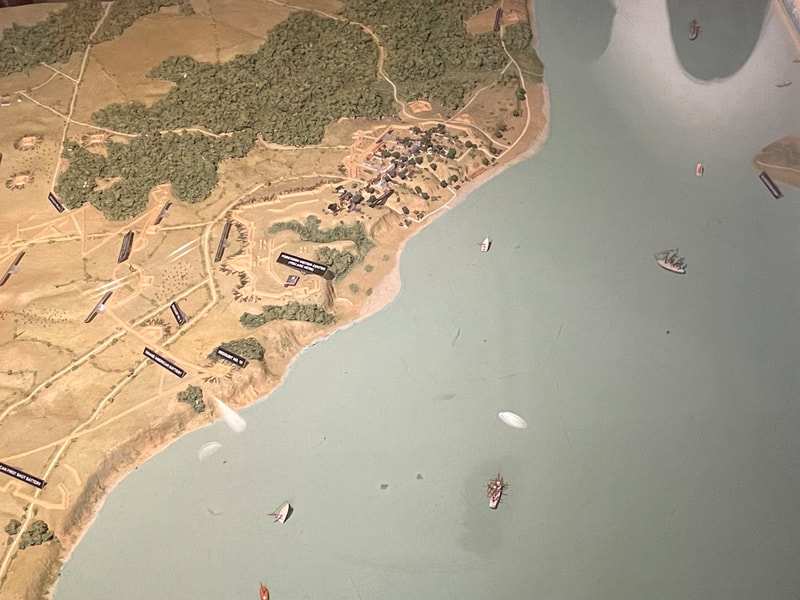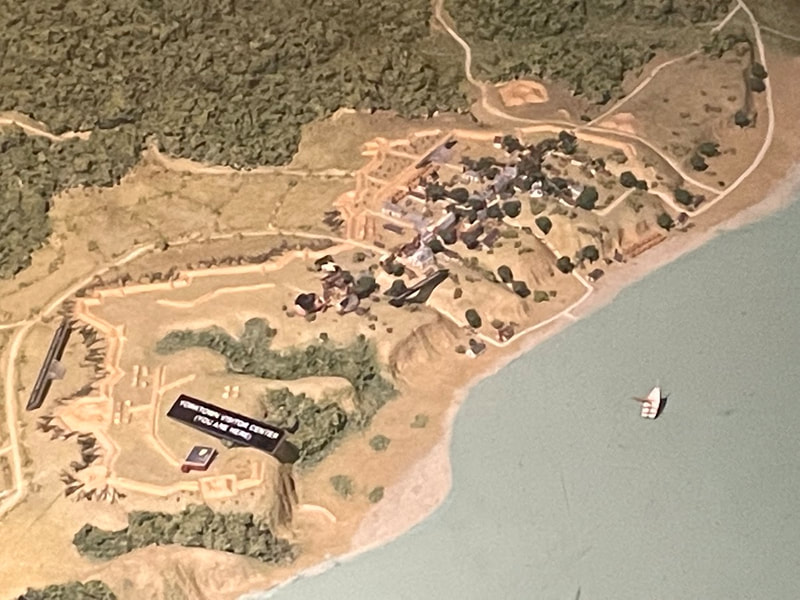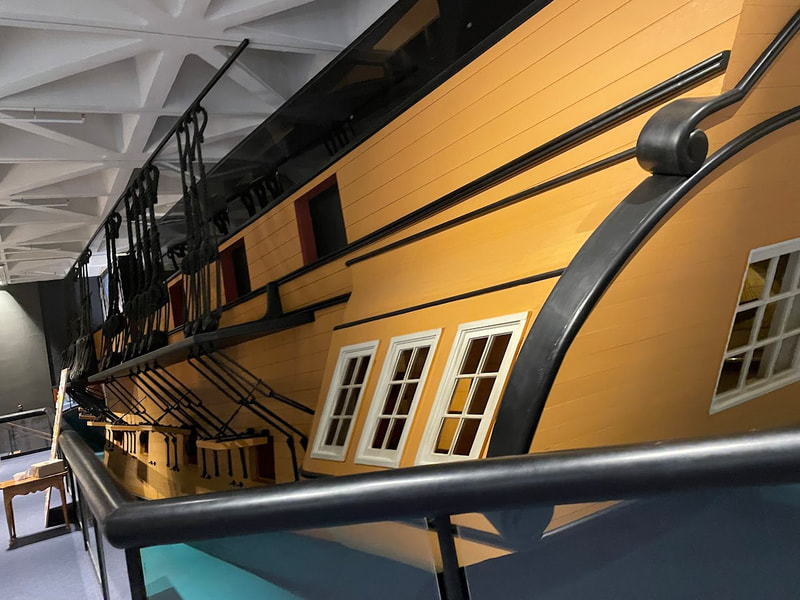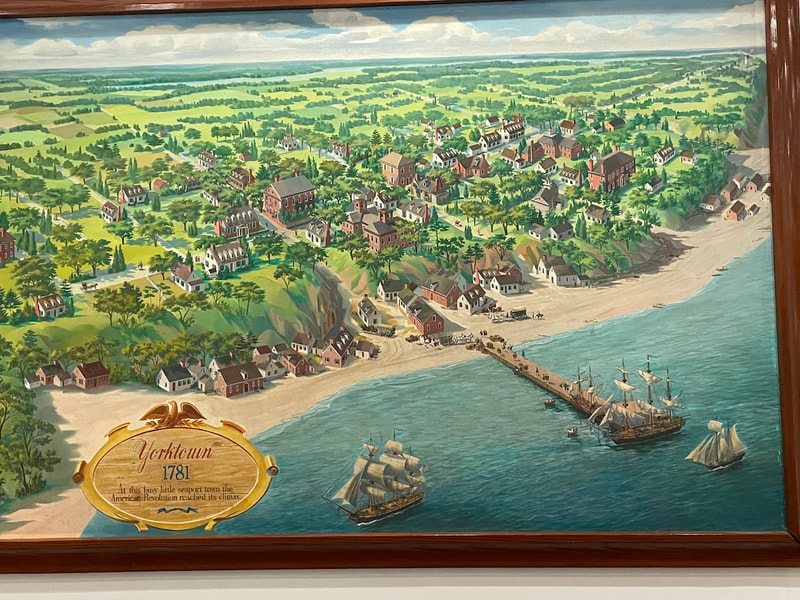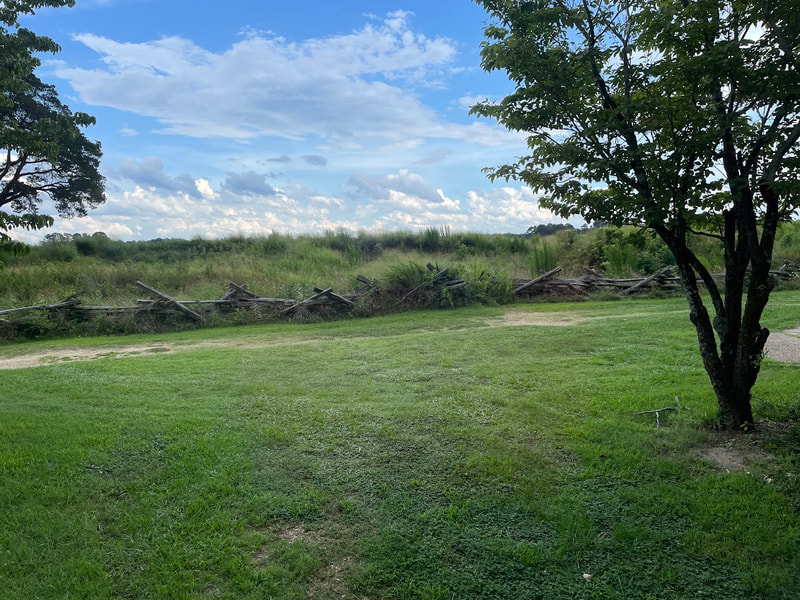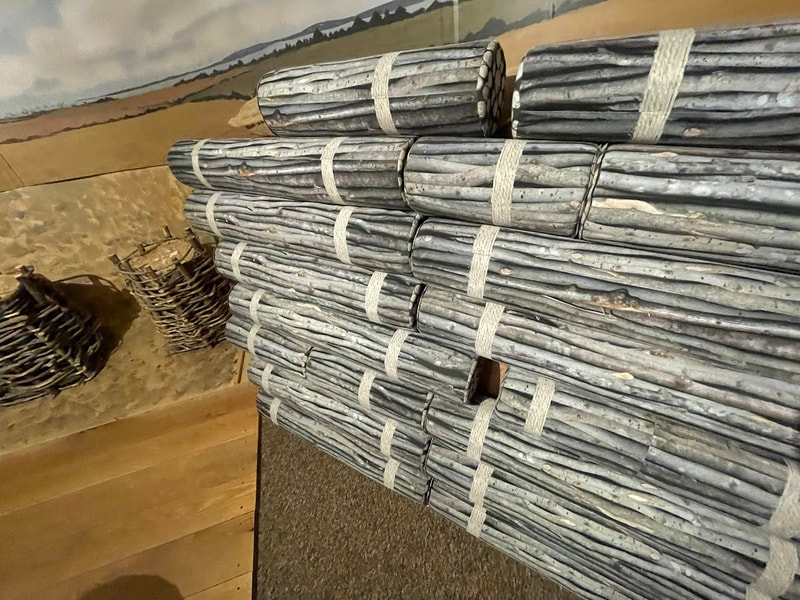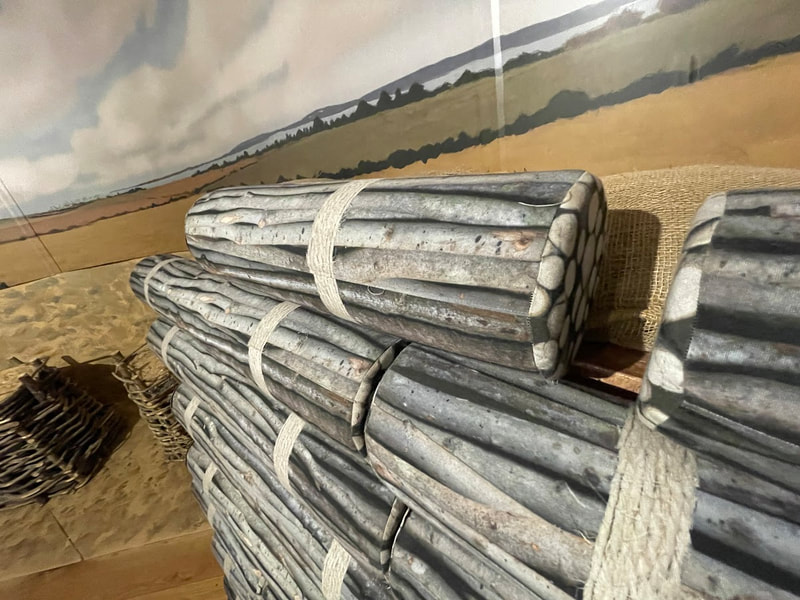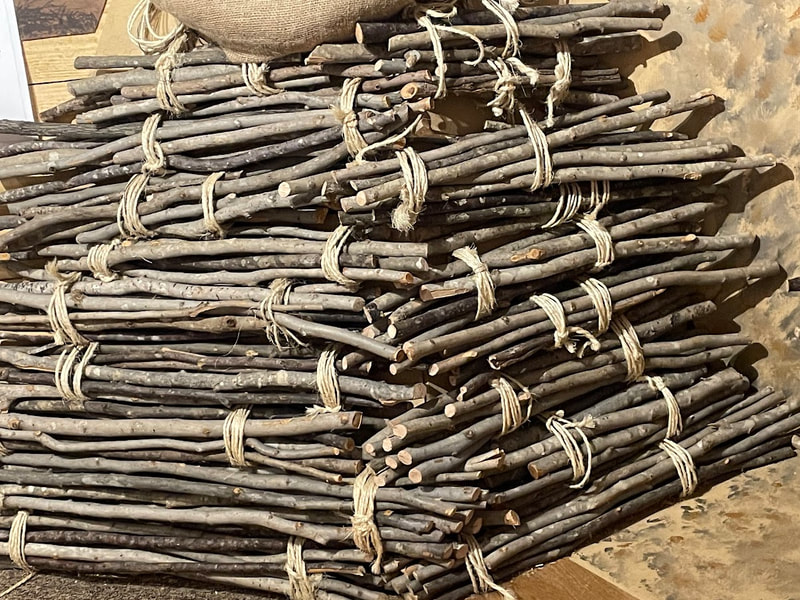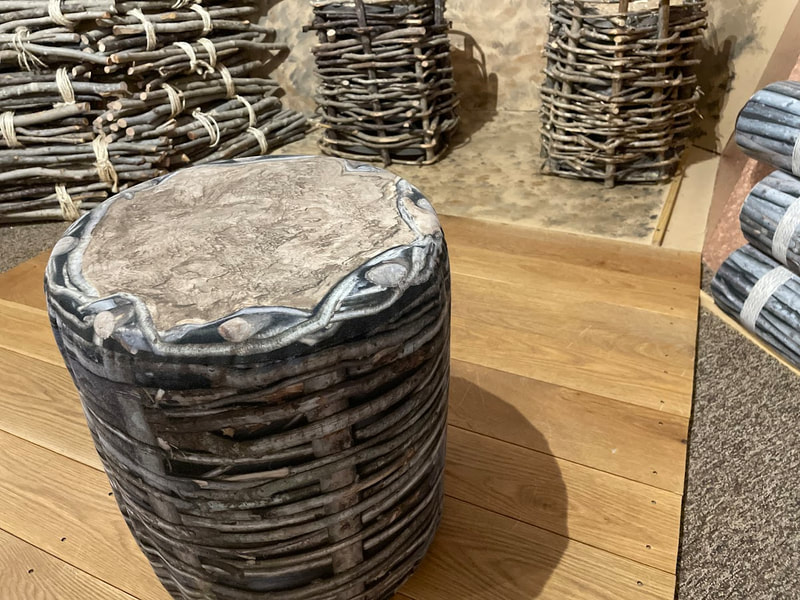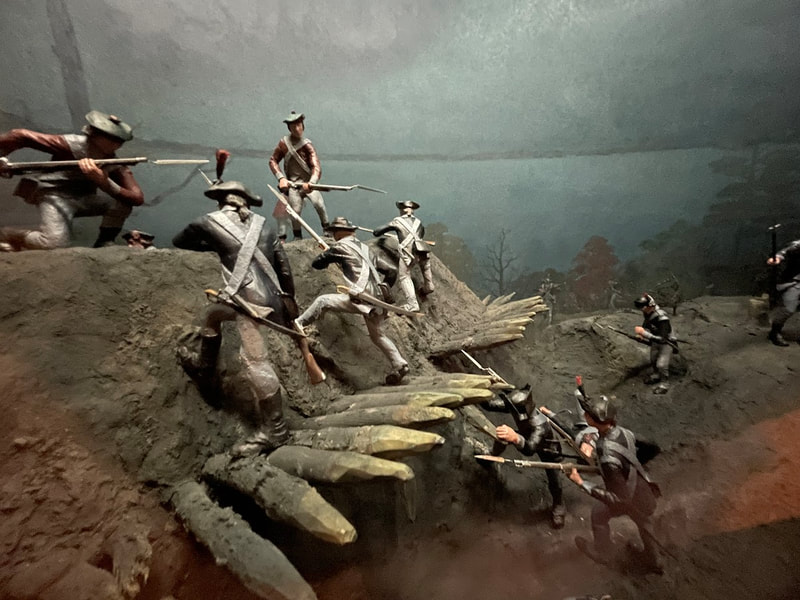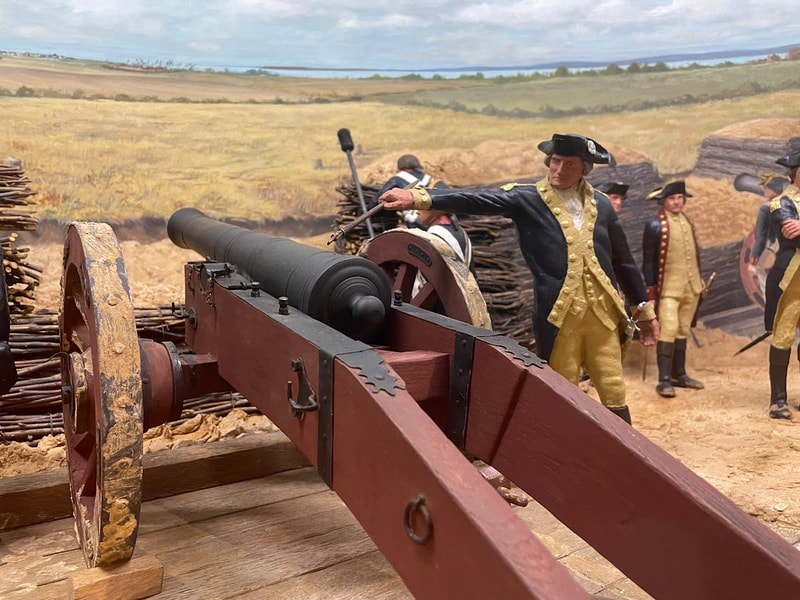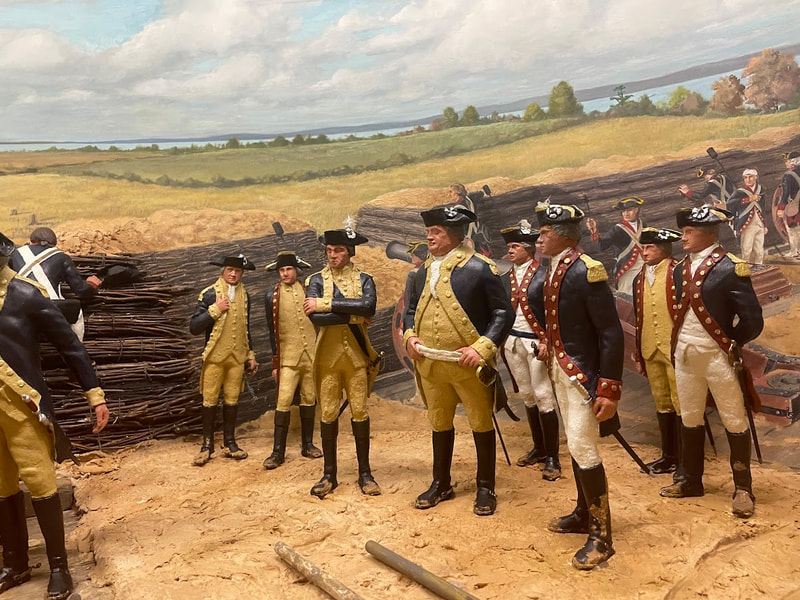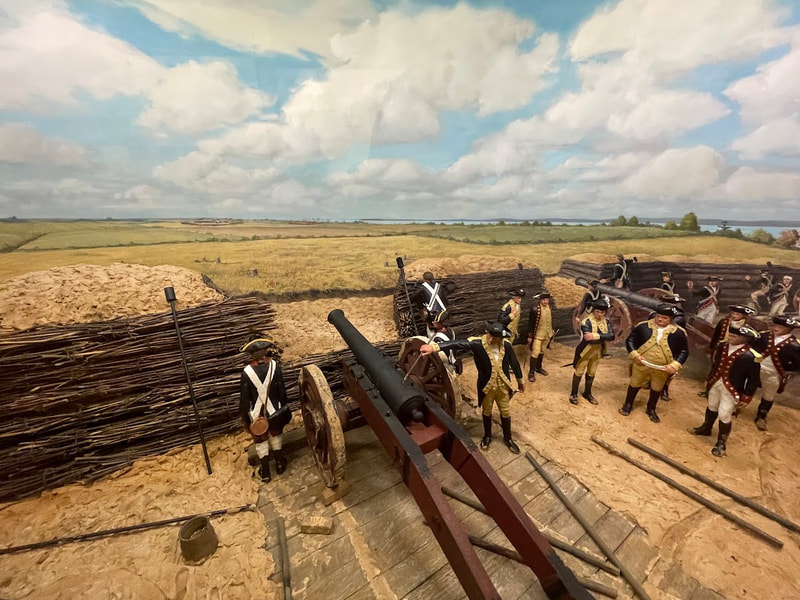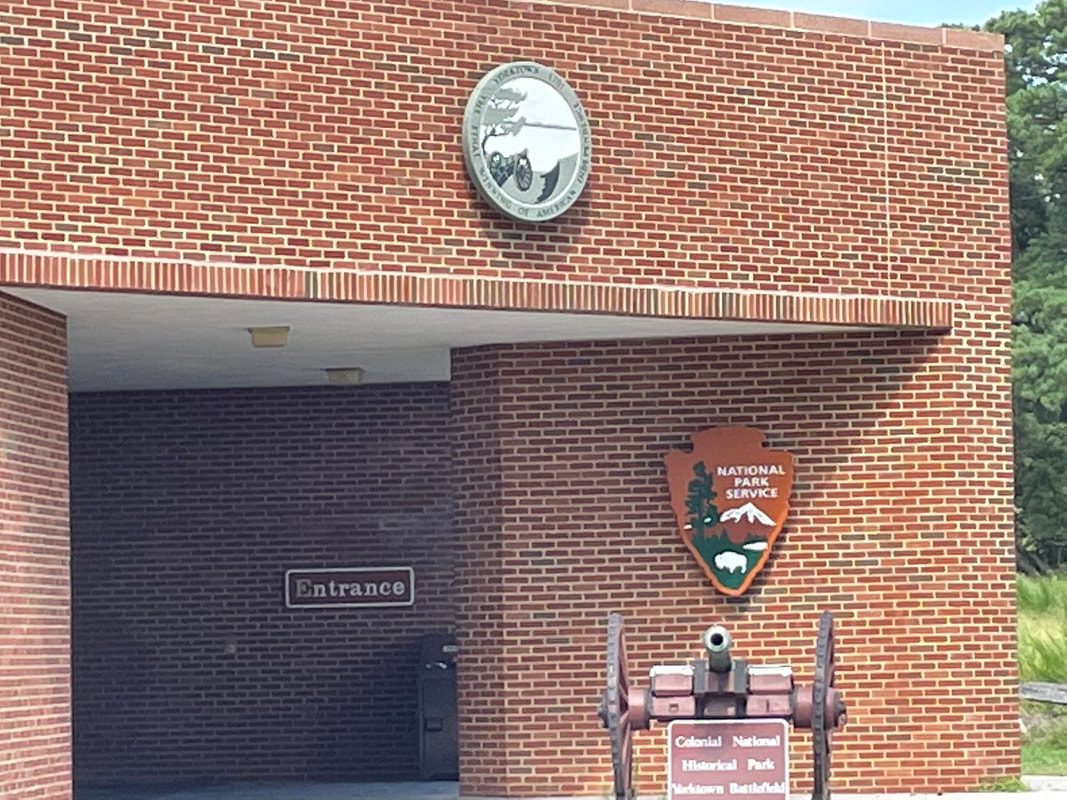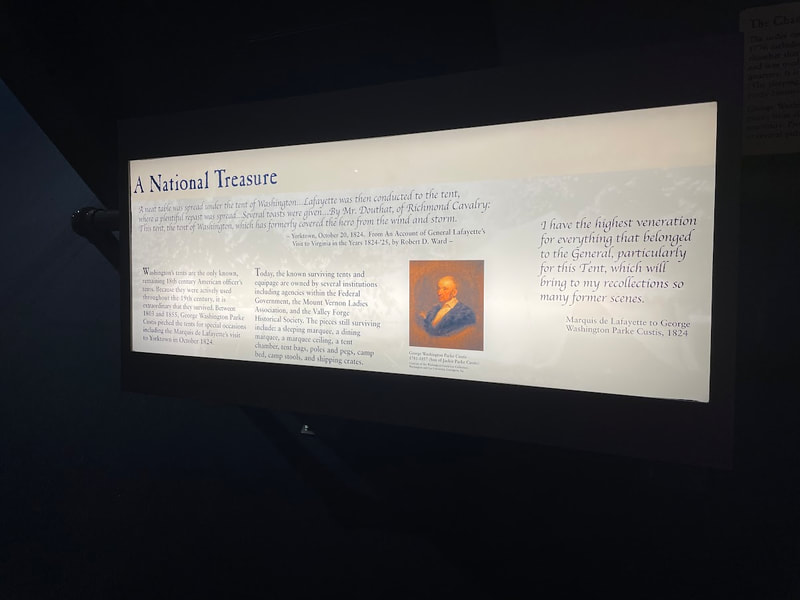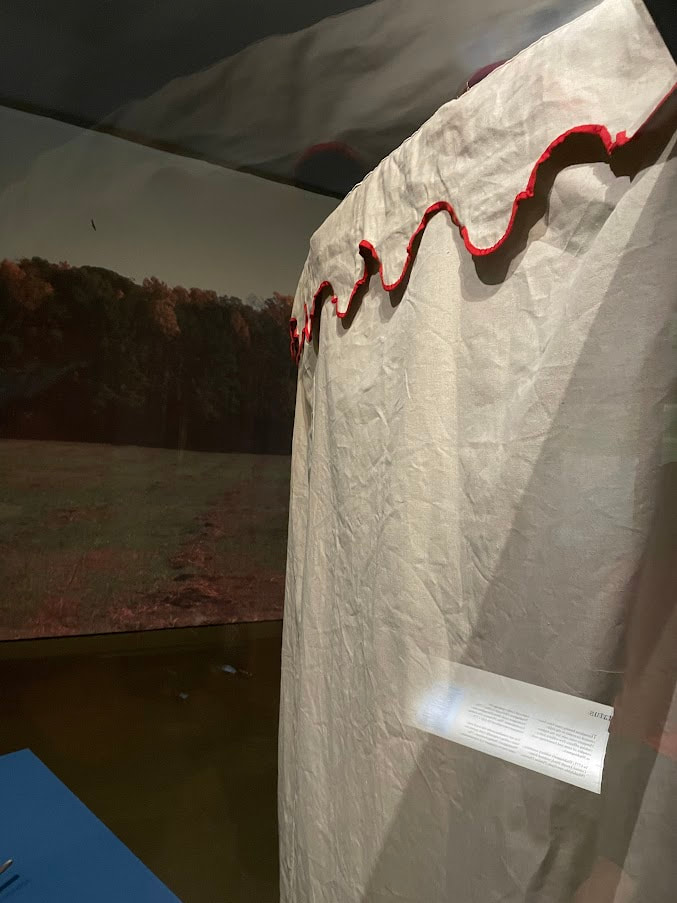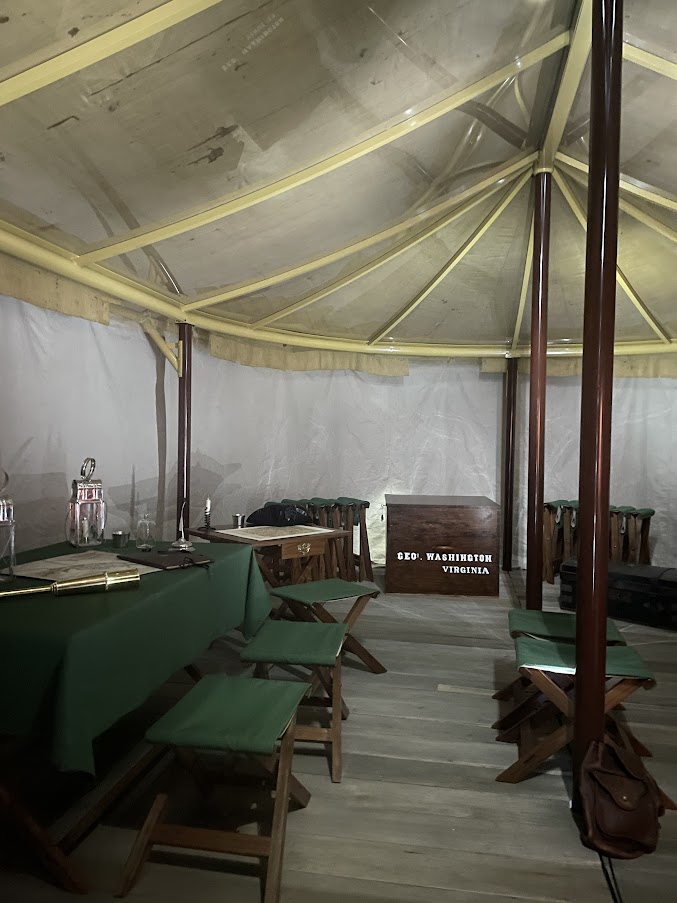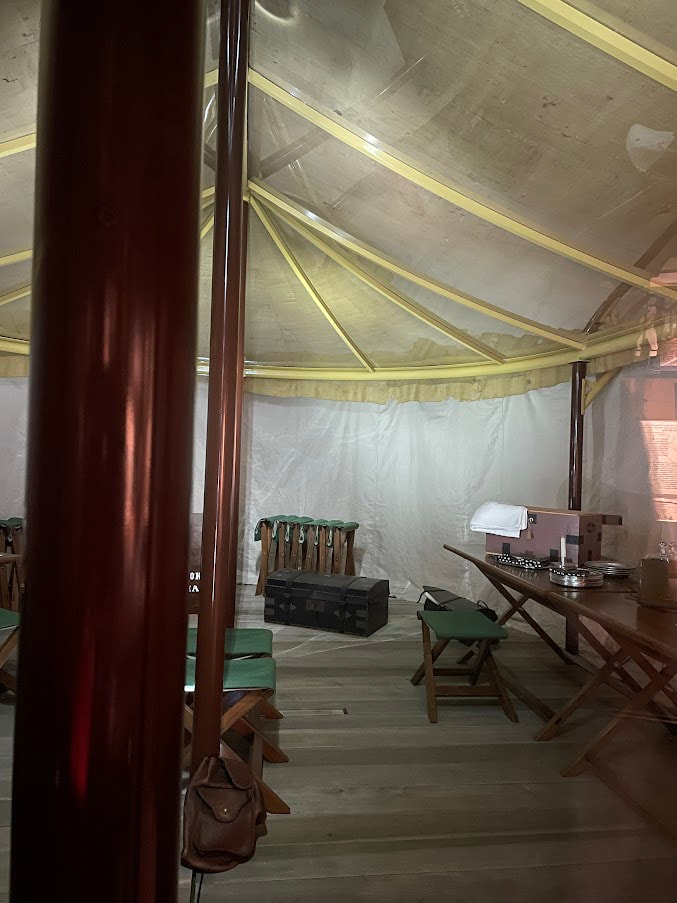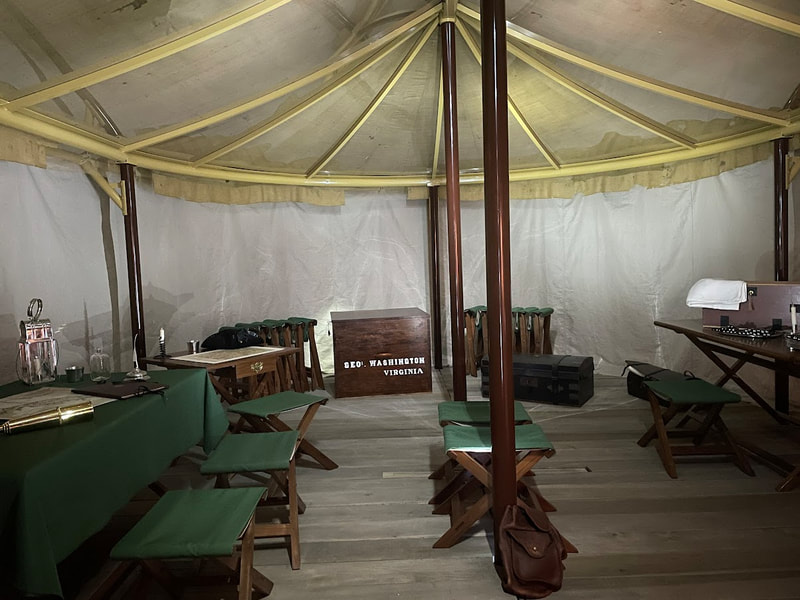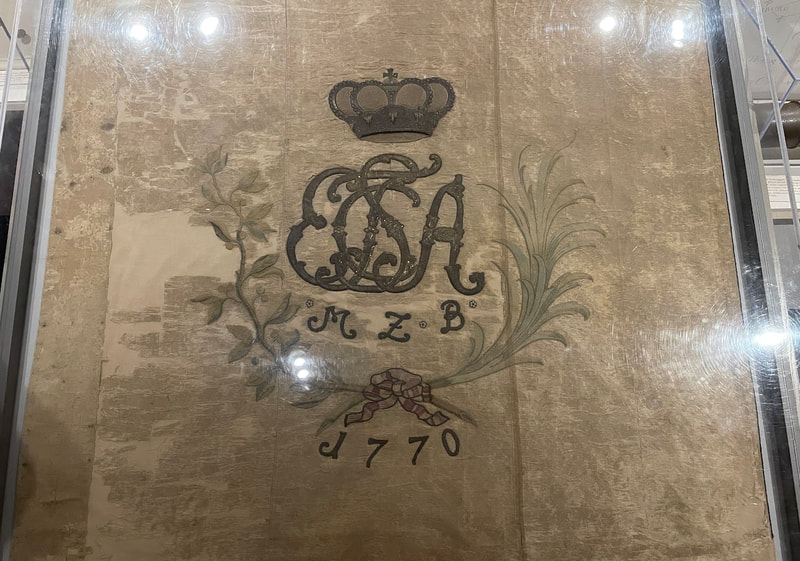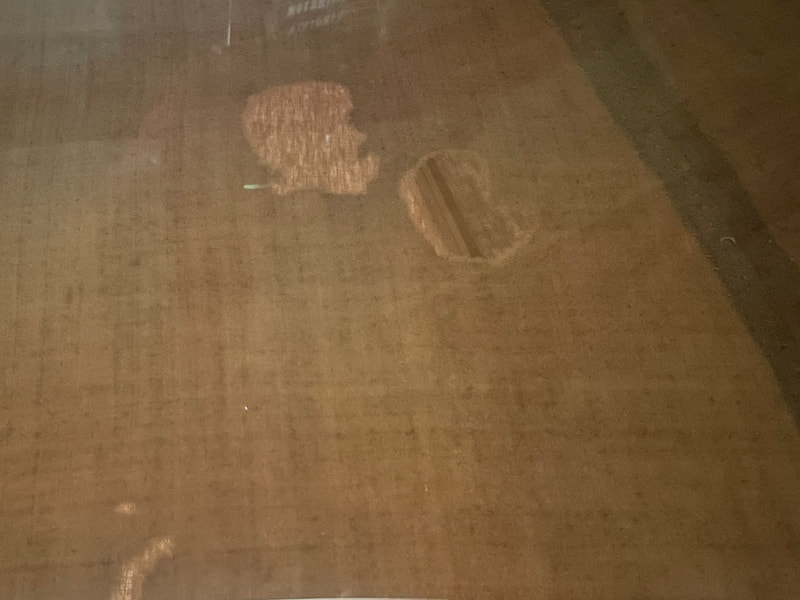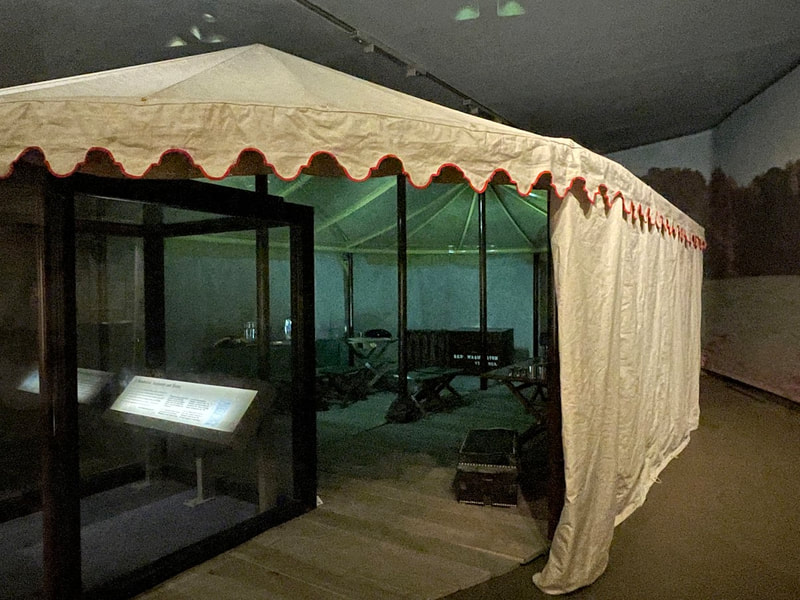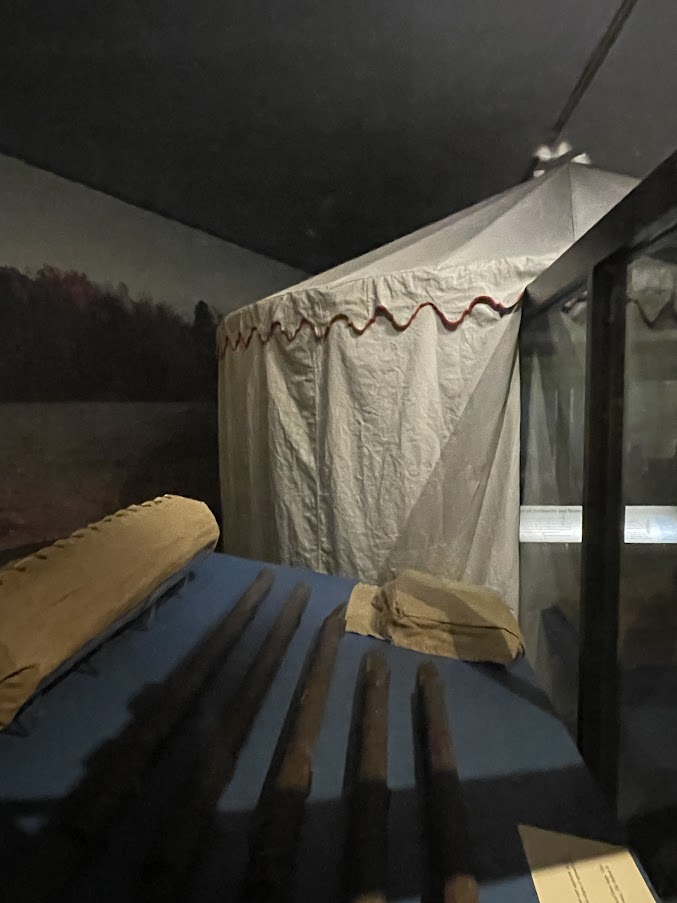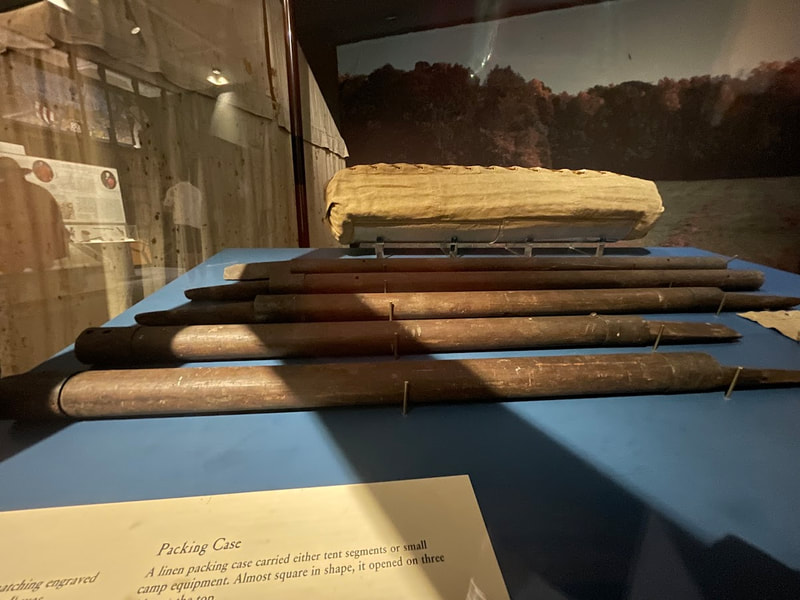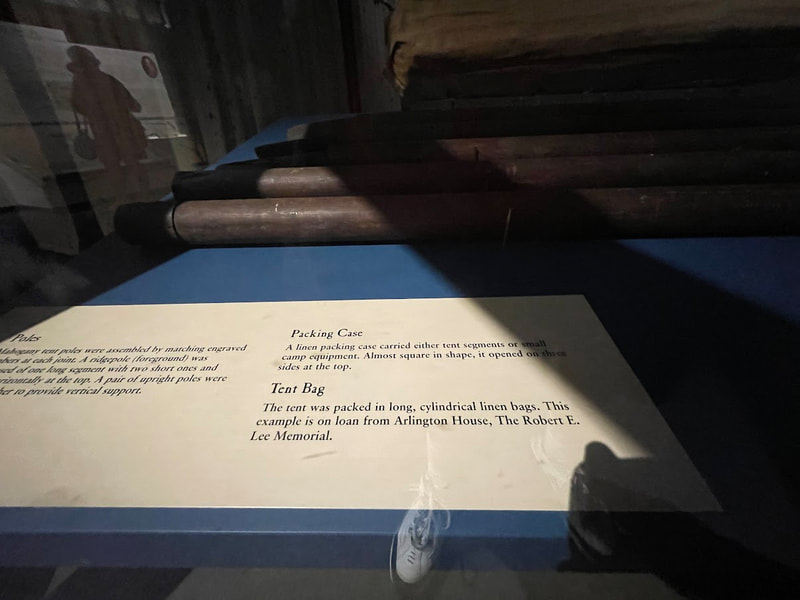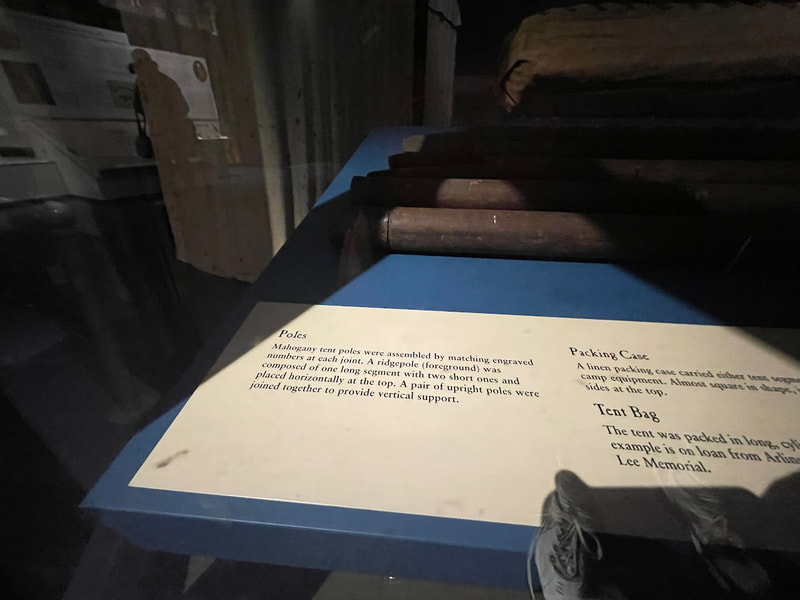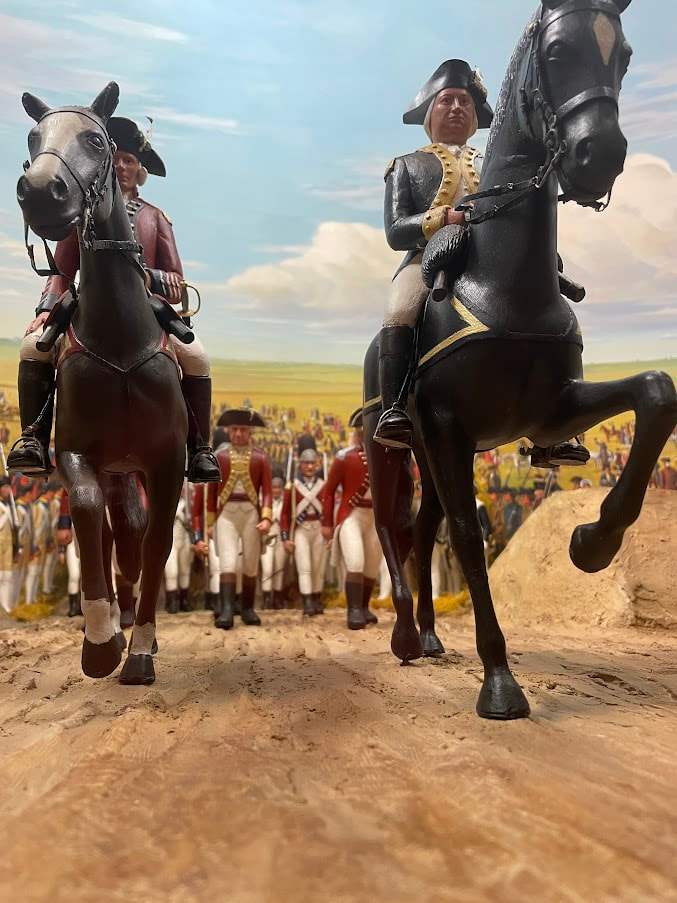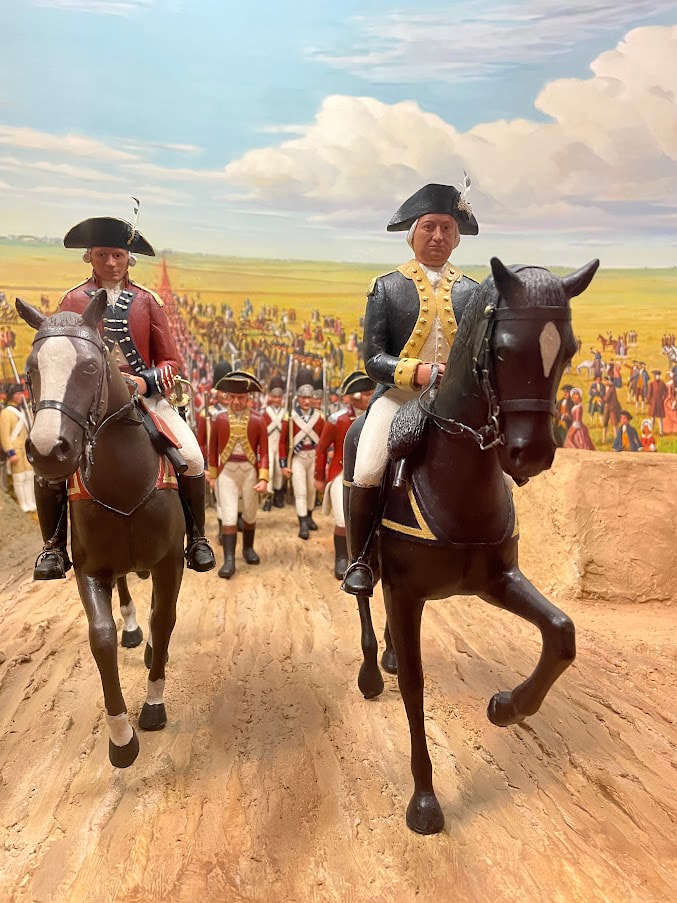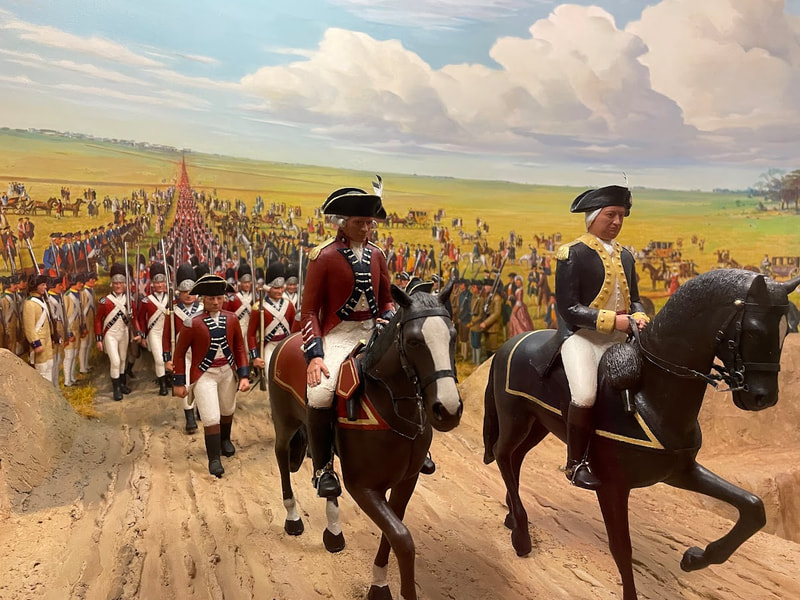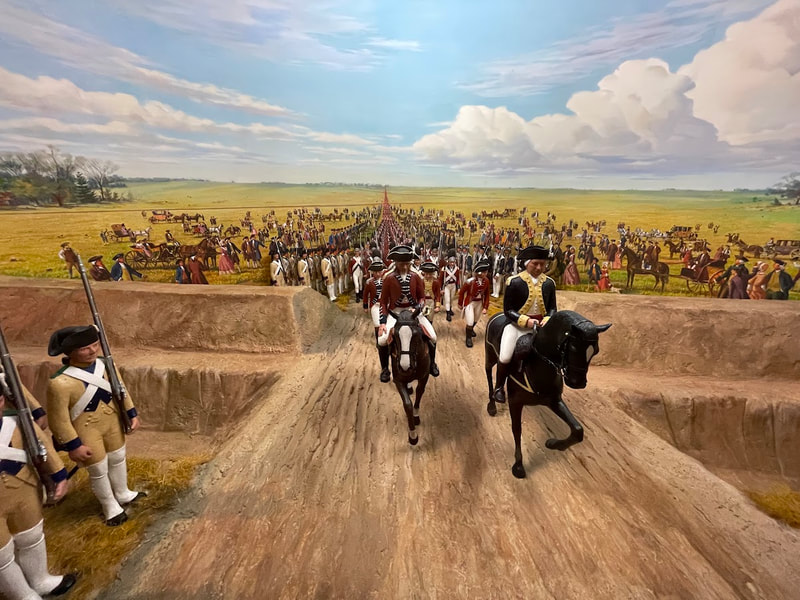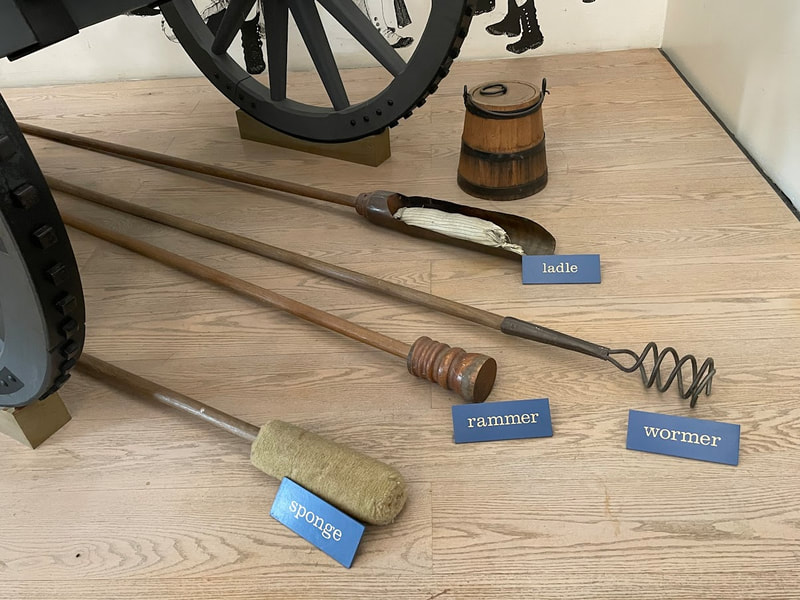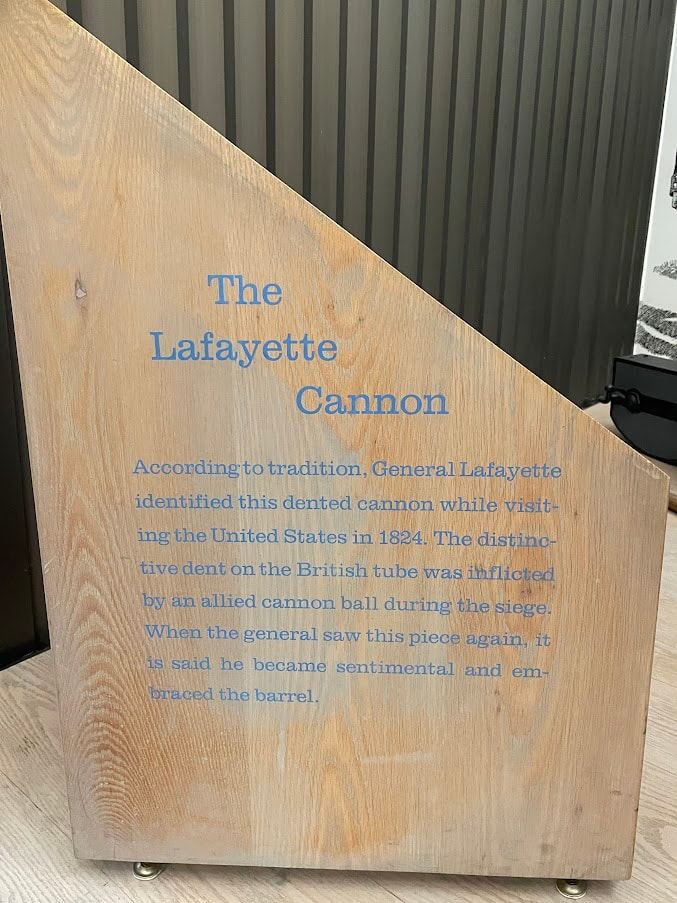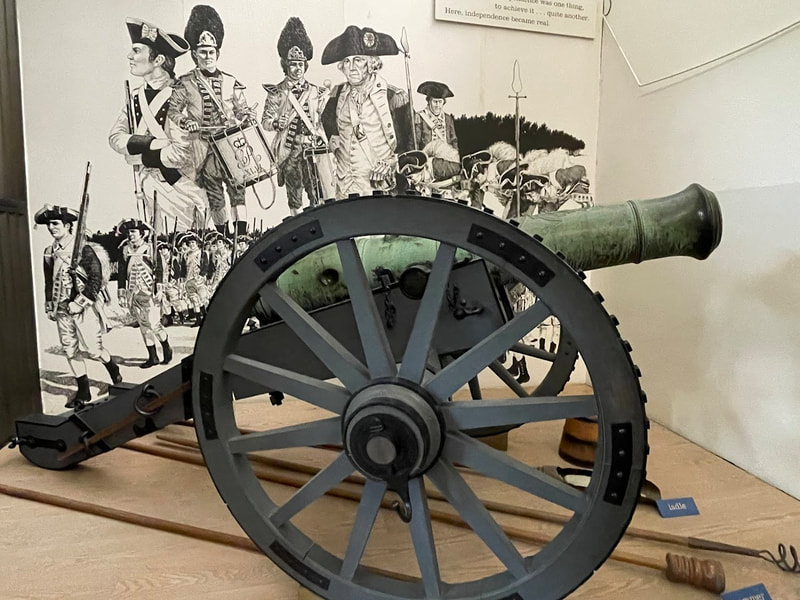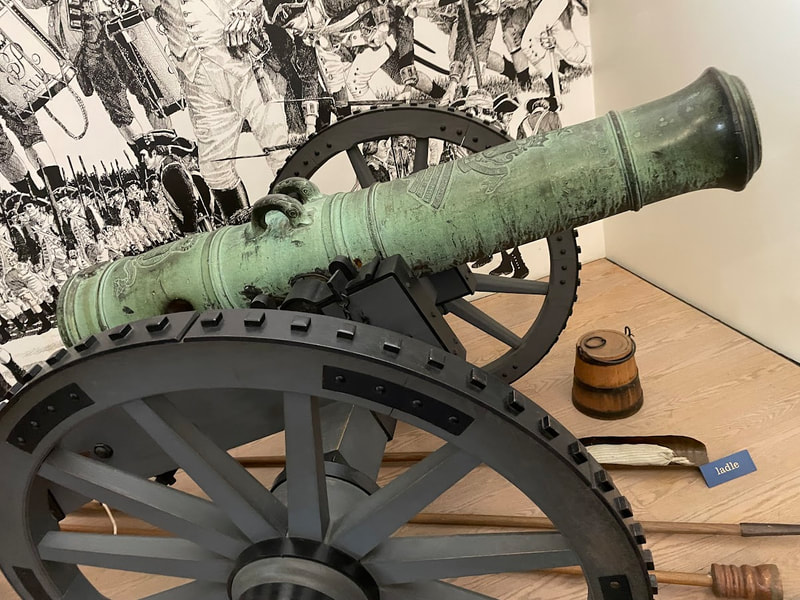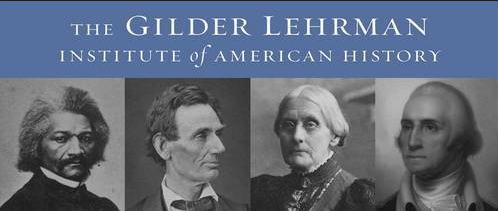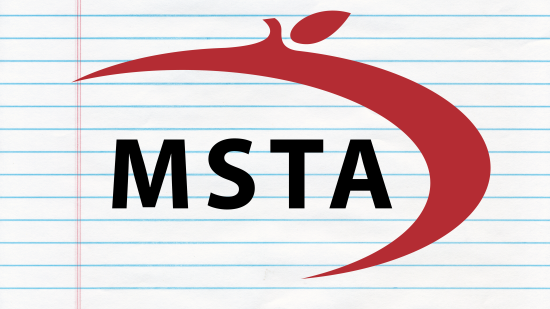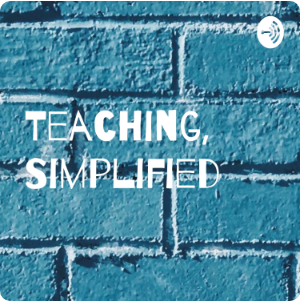| I had looked forward to this day all week - the day when we would visit the famed location of the Washington's siege on the British fort at Yorktown, the place where Alexander Hamilton finally took a major leadership role in a military operation, along with the French hero of the Revolution, the Marquis de Lafayette. They all walked here. Inside the museum, we could see a map of the area, lit to explain how things happened on that day. A ship sat in the opening room of the museum, and it was a thrill to walk on it and see the displays within. Washington insisted on being the one who lit the first cannon to begin the siege against Cornwallis' British fortress. The defensive measures are depicted below, as well as a diorama that shows how things might have looked. The dramatic, successful attacks led by Hamilton and Lafayette are illustrated in miniature, as well. Somewhere among the gun smoke and cannon fire, the surrender flag was displayed, and this final decisive battle of the war was over. Fighting continued for years, but the war, it is agreed, effectively ended at Yorktown. The dramatic surrender ceremony is also modeled in diorama form, with the British Redcoats marching and laying down their arms between columns of American Patriots. This scene, depicted in art and film is one that is difficult to watch when proper empathic emotion is in place by the viewer or reader who understands the real meaning of what happened in this place. | Most thrilling, however, was the opportunity to see George Washington's actual marquee tent, used as headquarters in battle. What a rare chance to see this national treasure! Even more exciting was the chance to stand inside it. Yes, there is a glass area that extends into this tent, in which museum visitors may stand and imagine when the structure was actually in use nearby. |
|
There were a couple of really cool experiences at the Yorktown Battlefield National Park - moments when a history buff might feel a tingle. There, outside the gift shop, is a cannon turned green from age. It looks like many others that could be displayed at museums across the region. But in its side is a significant dent inflicted by a Patriot or French cannon ball during the siege. General Lafayette's path, in a later tour of the new United States, crossed with this cannon, and he was able to identify it by its distinctive dent. Apparently, he became emotional at seeing his old foe again, and the memories of the battle were dredged up in a very significant way. Another national treasure, this is, still standing after all these years.
0 Comments
Your comment will be posted after it is approved.
Leave a Reply. |
AnthemThe Hoggatteer Revolution
is an extensive, award-winning, inimitable, digital platform for Encouraging and Developing the Arts, Sciences, and honest Christianity in the beautiful, friendly LAND OF THE FREE AND THE HOME OF THE BRAVE This site is described as
"a fantastic site... chockablock full of interesting ideas, hilarious anecdotes, and useful resources." 
...to like, bookmark, pin,
tweet, and share about the site... and check in regularly for new material, posted often before DAWN'S EARLY LIGHT! History in ResidenceElementary Schools: Bring Mr. Hoggatt into your classroom for a week of engaging and rigorous history programming with your students. LEARN MORE BUILDING BETTER
|
